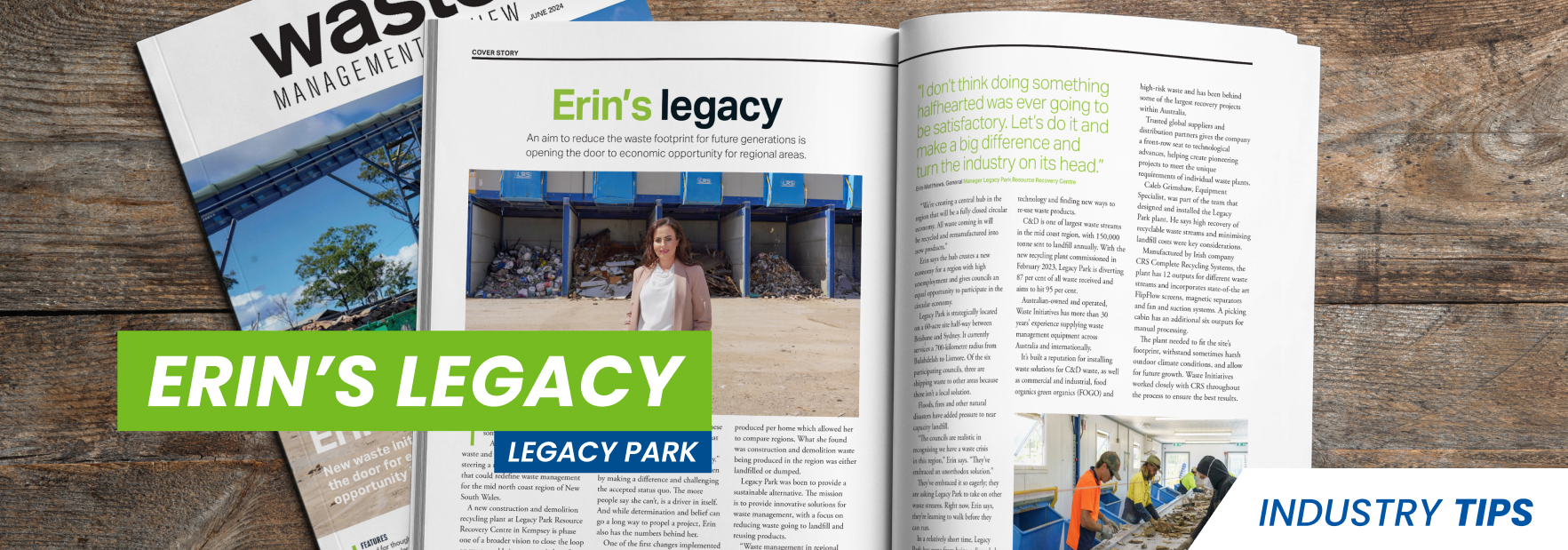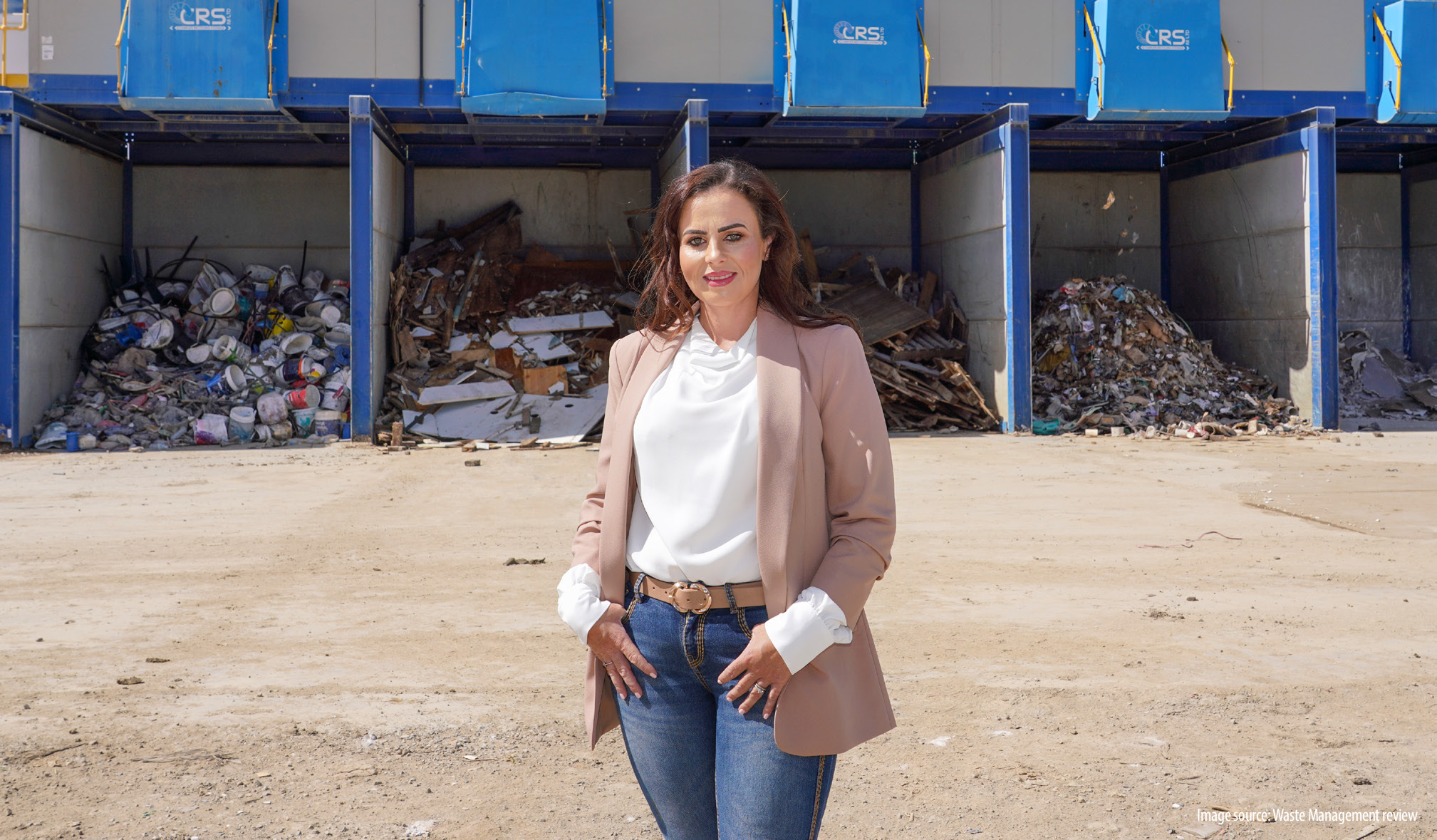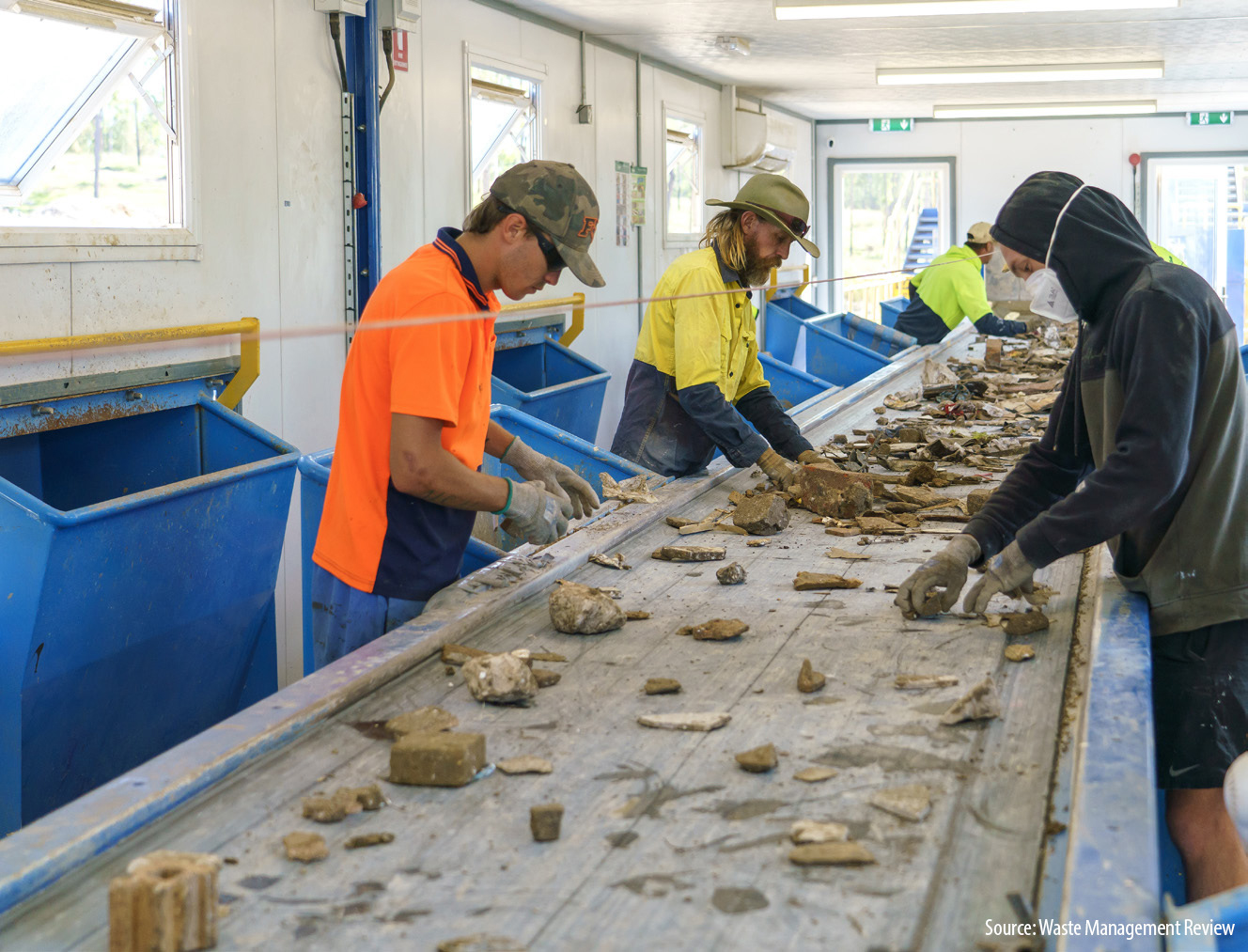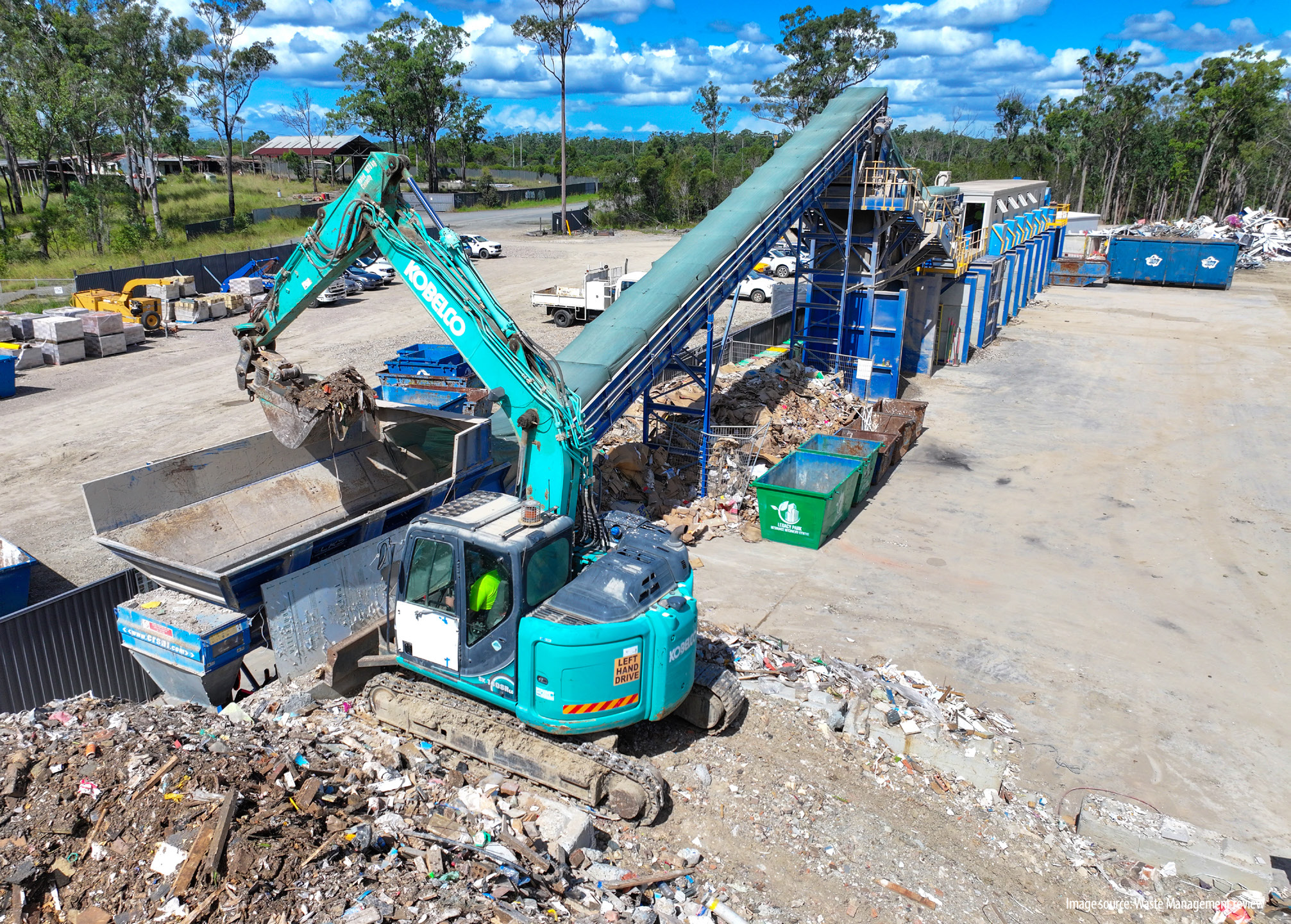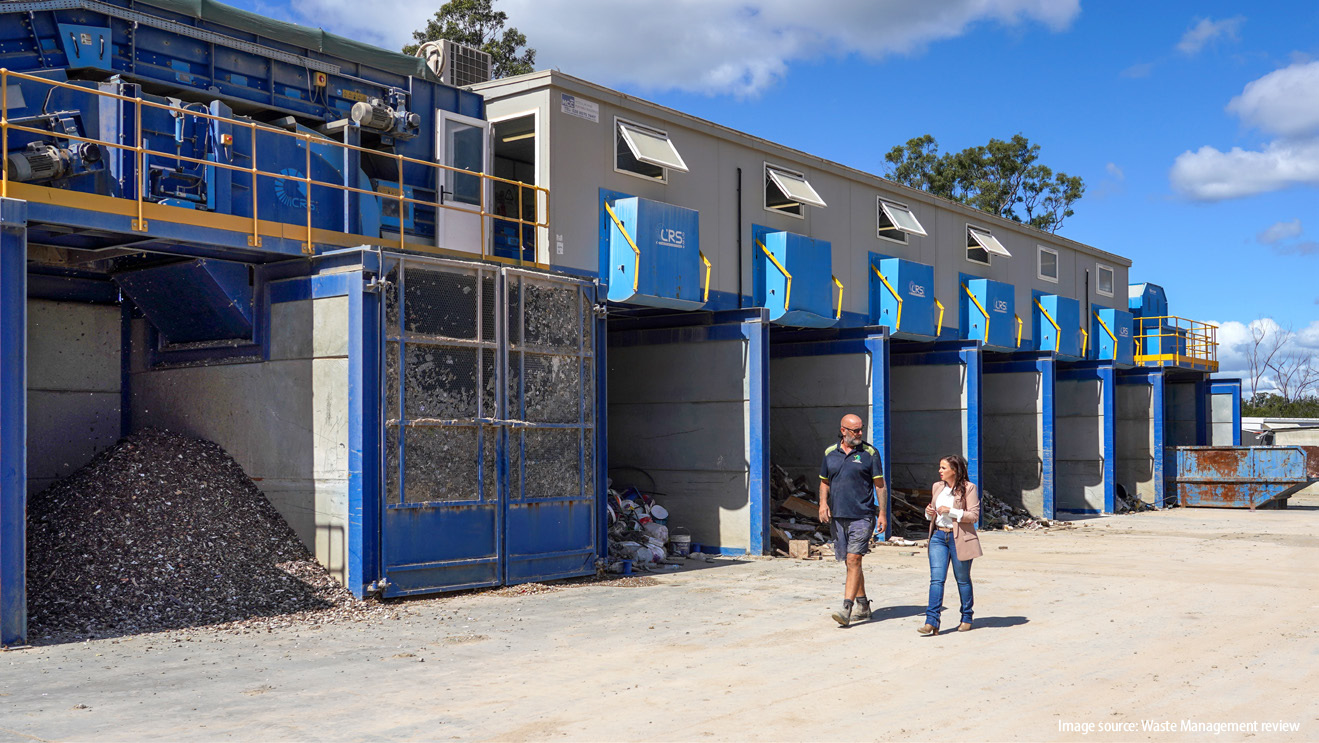11 June, 2024
An aim to reduce the waste footprint for future generations is opening the door to economic opportunity for regional areas.
Tell Erin Matthews she can’t do something – and watch her do it.
A relative newcomer to the waste and recycling industry, Erin is steering a multi-million development that could redefine waste management for the mid north coast region of New South Wales.
A new construction and demolition (C&D) recycling plant at Legacy Park Resource Recovery Centre in Kempsey is phase one of a broader vision to close the loop on waste and bring economic benefits to the area. Erin hopes the hub will one day be a blueprint for other regions to manage their waste.
“This is not about doing the quick, easy solution, it’s about sustainable, long-term solutions that have results,” she says. “Waste in regions works. These type of projects fit and align with what Australia is trying to do in reducing waste and creating a circular economy.”
By her own admission, Erin is driven by making a difference and challenging the accepted status quo. The more people say she can’t, is a driver in itself. And while determination and belief can go a long way to propel a project, Erin also has the numbers behind her.
One of the first changes implemented when her family bought a skip bin and recycling business five years ago was segregating waste at the source and introducing a transparent tracking system.
That gave Erin an insight into what type of waste and how much was being produced per home which allowed her to compare regions. What she found was construction and demolition waste being produced in the region was either landfilled or dumped.
Legacy Park was born to provide a sustainable alternative. The mission is to provide innovative solutions for waste management, with a focus on reducing waste going to landfill and reusing products.
“Waste management in regional areas has a different set of problems compared to metropolitan regions,” Erin says. “The viability of having waste sorting to the degree that is needed to divert from landfill just isn’t there. One council can’t afford the resources to sort all the different waste streams.
“I don’t think doing something halfhearted was ever going to be satisfactory. Let’s do it and make a big difference and turn the industry on its head.”
“We’re creating a central hub in the region that will be a fully closed circular economy. All waste coming in will be recycled and remanufactured into new products.”
Erin says the hub creates a new economy for a region with high unemployment and gives councils an equal opportunity to participate in the circular economy.
Legacy Park is strategically located on a 60-acre site half-way between Brisbane and Sydney. It currently services a 700-kilometre radius from Bulahdelah to Lismore. Of the six participating councils, three are shipping waste to other areas because there isn’t a local solution.
Floods, fires and other natural disasters have added pressure to near capacity landfill.
“The councils are realistic in recognising we have a waste crisis in this region,” Erin says. “They’ve embraced an unorthodox solution.”
They’ve embraced it so eagerly; they are asking Legacy Park to take on other waste streams. Right now, Erin says, they’re learning to walk before they can run.
In a relatively short time, Legacy Park has gone from being a discarded rural property to an operational construction and demolition (C&D) recycling facility.
A New Way Forwad
Being a leader in sustainability means staying on the cutting-edge of technology and finding new ways to re-use waste products.
C&D is one of largest waste streams in the mid coast region, with 150,000 tonne sent to landfill annually. With the new recycling plant commissioned in February 2023, Legacy Park is diverting 87 per cent of all waste received and aims to hit 95 per cent.
Australian-owned and operated, Waste Initiatives has more than 30 years’ experience supplying waste management equipment across Australia and internationally.
It’s built a reputation for installing waste solutions for C&D waste, as well as commercial and industrial, food organics green organics (FOGO) and high-risk waste and has been behind some of the largest recovery projects within Australia.
Trusted global suppliers and distribution partners gives the company a front-row seat to technological advances, helping create pioneering projects to meet the unique requirements of individual waste plants.
Caleb Grimshaw, Equipment Specialist, was part of the team that designed and installed the Legacy Park plant. He says high recovery of recyclable waste streams and minimising landfill costs were key considerations.
Manufactured by Irish company CRS Complete Recycling Systems, the plant has 12 outputs for different waste streams and incorporates state-of-the art FlipFlow screens, magnetic separators and fan and suction systems. A picking cabin has an additional six outputs for manual processing.
The plant needed to fit the site’s footprint, withstand sometimes harsh outdoor climate conditions, and allow for future growth. Waste Initiatives worked closely with CRS throughout the process to ensure the best results.
“It’s impressive,” Caleb says. “What stands out is the use of technology and how much can be achieved without human intervention.
“CRS has been manufacturing and supplying these types of plants globally since 2009 and C&D is its specialty.
“For Legacy Park, it’s a significant investment that is transforming the way their business operates.”
He says what’s unique about Waste Initiatives is the array of products it has to suit client needs. Specialist engineers work with clients to determine the best solution and can pull together systems from multiple manufacturers.
For Erin, it’s Waste Initiatives’ willingness to work with the team on a personal level and understand their vision that stands out.
“They were really involved from a conceptual stage and worked with us through each step.Their team is really open at all levels of consultation, and they are there on the ground to help,” Erin says.
“There were a lot of challenges, particular during COVID, but maintaining an open relationship with Waste Initiatives allowed us to deal with the challenges.
“This is not a project that’s been done here before. There are changes as you go that only experience can teach you. Waste Initiatives has been open to feedback and their technical support has been great.”
The plant was built on one half of a 90-metre x 20-metre slab. Within the next two years Erin plans to duplicate the plant in a staged approach to increase capacity to 200,000 tonne annually and is working with Waste Initiatives for the next phase.
“This is a long-term project with a 20-year vision, and we look forward to partnering with Waste Initiatives through every step of that process,” she says.
GOING FULL CIRCLE
Now they’re producing two recycled gypsum products – one super fine and one more coarse, giving the option to supply a high-grade product back to processors for new gyprock board or for agricultural use. The end goal is to make new plasterboard on site.
Starting with gypsum was a strategic move. It’s a heavy product that takes up a lot of landfill space, and there’s a demand for it given the region’s soil type and agricultural industry.
Erin says a similar process will be used for plastics – after primary “separation, the plastics will be fed back through the C&D plant as a single waste stream, shredded and extruded into a food grade product. The same process will be used with each new waste stream.
While they’re still developing processes, Legacy Park is working with partners to find a solution for other waste streams.
“It’s an industry with a really big future,” Erin says.
“In five years, I’d love to see us taking in all C&D waste from the six councils in the region, diverting it from landfill, manufacturing it into new products and shipping it out for resale.
“In 10 years, waste to rail. We’re ideally located so we can load waste containers in and out via rail. That would allow us to take waste from problem areas and send it back out as a remanufactured product to deliver to the market.
“From there, it’s self-growing and evolutionary.”
Erin has a clear vision of the big picture, but it’s hasn’t always been smooth sailing. She says being a female in the industry was sometimes a hard sell. Others said she’d never get the construction industry to look at their waste differently. Then there was the legislation, red tape and authorities.
She says it did take some effort to break through, but there was never a ‘give-up’ point, and she believes she has changed people’s perceptions.
To drive such a large-scale change, it’s vital to have a team that shares the same belief both within the organisation and those that you work with.
Waste Initiatives works with many local change makers like Erin. Caleb says the company recognises that the day-to-day demands of running a facility leave little time for sourcing the best technology available.
Partnering with leading international manufacturers in waste recovery equipment, Waste Initiatives brings that expertise to local projects.
“We know that supporting operations with equipment that will run in the harshest of Australian environments is critical,” he says.
“Waste Initiative is committed to supporting all of its installations with comprehensive local spare parts and back up.”
Legacy Park is a company of family and employees committed to environmental sustainability. The workforce is about 45 strong, by the end of 2024 that will grow to about 100, and within five years, with a full remanufacturing facility on site, should be at 350.
“Developing and expanding Legacy Park is about creating a better future for our environment and generations to come,” Erin says.
“I don’t think doing something halfhearted was ever going to be satisfactory. Let’s do it and make a big difference and turn the industry on its head.”
For more information, visit wasteinititatives.com.au/construction-demolition-cd
Source: Waste Management Review

